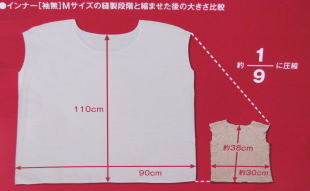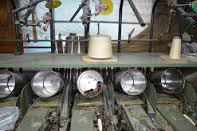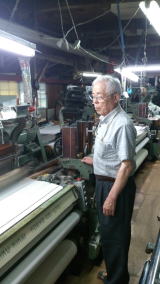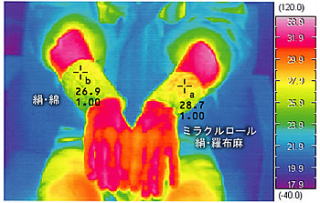- Saito Sangyo Co., Ltd. is located in the town of Kawamata, which is said to be the birthplace of Fukushima's sericulture and weaving industries.
- The sericulture industry was first introduced to Kawamata during the Asuka period. It is said that Princess Kotehime, the queen of Emperor Shushun, escaped and introduced the sericulture.
Mr. Shoichi Saito, the fourth generation master weaver and president of the company, has been working energetically to develop new products while inheriting the historic silk fabric. - We created the Miracle Roll, an inner supporter that has been getting a lot of attention in recent years.

Elasticity of 1/9
- Miracle Roll" is a supporter, but there is a difference in the ingredients compared to a normal supporter.
Usually, cotton, nylon, and acrylic are used, but Miracle Roll is made from silk or rafu-hemp, which is a plant fiber. - Mr. Saito developed Miracle Roll about 13 years ago when he had an encounter
with Rafu hemp.
The Fukushima Technical Support Center of the Fukushima High-Tech Plaza, an organization that conducts research on textiles, has asked us to develop a product using Rafu linen fibers. - We started making products using the technology of making pleated silk fabric by special processing that we had been working on for a long time.。
- Miracle Roll" is a utility model by Shoichi Saito.
As you can see from its composition, it takes advantage of the 8 percent shrinkage of polyurethane.
The materials used are silk, cotton and Rafu hemp.
- 40% cotton, 27% silk, 25% non-designated fiber ( Rafu hemp ), 8% polyurethane
- Utility model registration: Registration No. 3147074





You can see the heat retention effect of Rafu hemp.